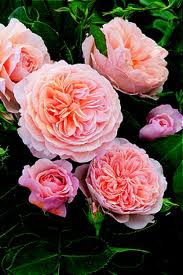
Are you looking for a film to send a chill down your spine? Forget about
The Shining and
Nightmare on Elm Street, and look for a DVD called
Death for Five Voices. It's a lurid story about the life of composer Carlo Gesulado (1566-1613.) Musically, he's known for his intense, sad madrigals that sound (to me) like heartbroken angels singing. John bought one of his CD's recently, and it's just the thing when you feel like a little wallow in depression. Carlo Gesualdo was so beautiful his nickname was "Angel," and here's an angelic looking portrait:

Carlo Gesualdo, Prince of Venosa
But now the story gets interesting. Gesualdo was born in Venosa, then part of the Kingdon of Naples. From an early age he had a single-minded interest in music and little else. In 1586 he married his first cousin, Donna Maria d'Avalos. In her portrait below, she looks even more angelic than him.
But wait! Although she was a famous beauty, Gesualdo was more interested in music and hunting than his wife, and she started an affair which she managed to keep secret. He really
must have been preoccupied, because the rest of Naples knew about it long before him. You can imagine the snickering behind his back.

Donna Maria d'Avalos
When word finally got back to Gesualdo, he tricked the lovers into believing he was away hunting, then came back to his castle and caught them in the act. An old story... however, in this case Gesualdo murdered them both on the spot, and left their mutilated bodies in front of his palace for all to see. He dressed the unfortunate dead adulterer in his wife's clothes, with his pants stacked neatly beside him. Bye-bye.
The depositions of eyewitnesses survive to this day, so there's no lack of grisly detail. After the murders, the Neapolitan tabloid press picked up the story, and a flock of writers soon capitalized on the sensation by writing poems and stories which sold like hotcakes.
Gesulado couldn't be prosecuted because he was a nobleman-- and anyway, it was justifiable homicide in that time and place. They had it coming. But the violent man soon doubted the paternity of his dead wife's child, and the story goes he hung the little boy outside the castle wall in a harness until he died.

Gesualdo moved back to his country estate to avoid revenge and he married again. His new relationship was not good-- his second wife accused him of abuse and left to stay with her brother. Many angry letters went back and forth, but at least he never murdered her. Although there are suggestions that
she eventually murdered
him.
Late in life he suffered from depression (what a surprise) and had himself beaten daily by his servants. He never left his castle, and enjoyed nothing but music. With his vast financial resources, he was able to hire musicians for his own pleasure, and his most famous "woe-is-me" music was written during this period of isolation.
The DVD
Death for Five Voices was directed by Werner Herzog for television. It was filmed in Naples in 1995, and has a macabre style with the gritty, contemporary Naples setting and everyone talking about the crime as if it happened yesterday, instead of 400 years ago. And of course, the film is filled with Gesulado's hauntingly beautiful vocal music.
Click
here for a short YouTube video of a Gesualdo madrigal being performed, and you'll get the idea.
 It's amazing the amount of time you can waste on a computer. One rainy morning, I was sucked down into the wonderful New York Public Library Digital Gallery, and came out an hour later with a stiff neck and glazed eyes. The library has already scanned and cataloged nearly a million images, and the Vintage Holiday Cards collection has nearly 2,000 postcards of idyllic winter scenes, Easter eggs, holly, horseshoes, shamrocks, chicks, cupids, cherubs, four-leaf clovers, turkeys, and bushels of flowers.
It's amazing the amount of time you can waste on a computer. One rainy morning, I was sucked down into the wonderful New York Public Library Digital Gallery, and came out an hour later with a stiff neck and glazed eyes. The library has already scanned and cataloged nearly a million images, and the Vintage Holiday Cards collection has nearly 2,000 postcards of idyllic winter scenes, Easter eggs, holly, horseshoes, shamrocks, chicks, cupids, cherubs, four-leaf clovers, turkeys, and bushels of flowers. 













































